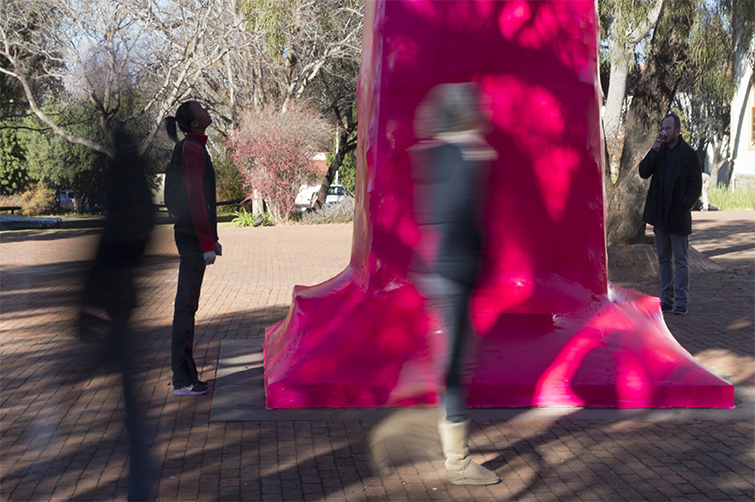Signs, symbolism, and statues at universities often recall colonial and apartheid legacies. In South Africa – since students at the University of Cape Town marched to topple a statue of Cecil John Rhodes – a so-called ‘Fallist Movement’
emerged that aims to decolonise universities. In 2020, catalysed by the death of George Floyd, the Black Lives Matter Movement has emerged, with a strong emphasis on removing symbols and practices that perpetuate segregationist legacies and harms of slavery, apartheid, and colonialism. Fallist and Black Lives Matter protests are against injustice and for dignity, equality, freedom, peace, and justice in society. As with other South African and global universities, the University of the Free
State is a site of slow, complicated, and often conflict-ridden struggles for transformation.
The Unit for Institutional Change and Social Justice (UICSJ) will be hosting a webinar with the theme (Re)moving, (Re)naming, (Re)forming, and (Re)presenting: Towards Dignity, Care, and Social Cohesion in Higher Education, on 24 November 2020.
This webinar will ask pluriversal questions with the aim of restoring dignity within new, dense notions of communities that are capable of the kinds of care that grant dignity and worth to all. In particular, this virtual conference will speak to experiences and struggles related to changing how spaces, symbols, artefacts and other oppressive accoutrements endure at universities, conveying meanings, narratives, and cultures that must be overcome. The webinar will (re)centre critical and creative voices. Local and international participants will present multiple dimensions on the struggles involving naming and renaming, as well as the removal, recontextualisation, or replacement of statues and memorabilia, within a broader effort towards social justice.
What the webinar seeks to address
- How do we address signs, symbolism, and statues in public spaces that misrepresent or degrade an individual/group with a view to restoring (collective) dignity?
- How do we address signs, symbolism, and statues that memorialise/celebrate people or representations of history that are controversial?
- How do we deal with the strong emotive/affective aspects of history and heritage, culture, and the loss thereof, in a way that enhances dignity and justice?
- What are the best processes for reconstructing public spaces and who should be involved in broad-based consultations?
Speakers and panel experts
Speaker: Prof Daniel Green (University of Wisconsin-La Crosse)
For an interesting background, please feel free to access and watch Prof Green’s YouTube video titled Racism and Native American Statuary, which you can find at https://www.youtube.com/watch?v=k70-xc811Po.
Panellists:
Facilitated by Dr Dionne van Reenen (Unit for Institutional Change and Social Justice, UFS).
Hosted by: The Unit for Institutional Change and Social Justice, University of the Free State
24 November 2020 at 16:00 (CAT; UTC + 02:00)
Join on your computer or mobile app
Click here to RSVP
Learn More | Meeting options
Enquiries to: SizepheXK@ufs.ac.za
Format of webinar
- Facilitators and speakers sign on at 15:45; participants to join.
- Dr Dionne van Reenen (from the Unit for Institutional Change and Social Justice) opens the session and introduces the guest speaker and panellists (five minutes).
- Prof Green presents (for 20 minutes).
- The four panel members respond to the theme for five minutes each (for a total of 20 minutes) in the following order: Dr Tumubweinee, Prof Legêne, Mr Magume, Prof Steyn.
- Facilitated questions and comments will be fielded from the live chat (about 30 minutes).
- Closure at 17:20.

A student gazes up at the statue of President MT Steyn during the Vryfees
held on the UFS Bloemfontein Campus in 2014, during which this and other
statues on campus and in the city were wrapped in plastic.
Photo: Image sourced from Cigdem Aydemir (Plastic Histories)